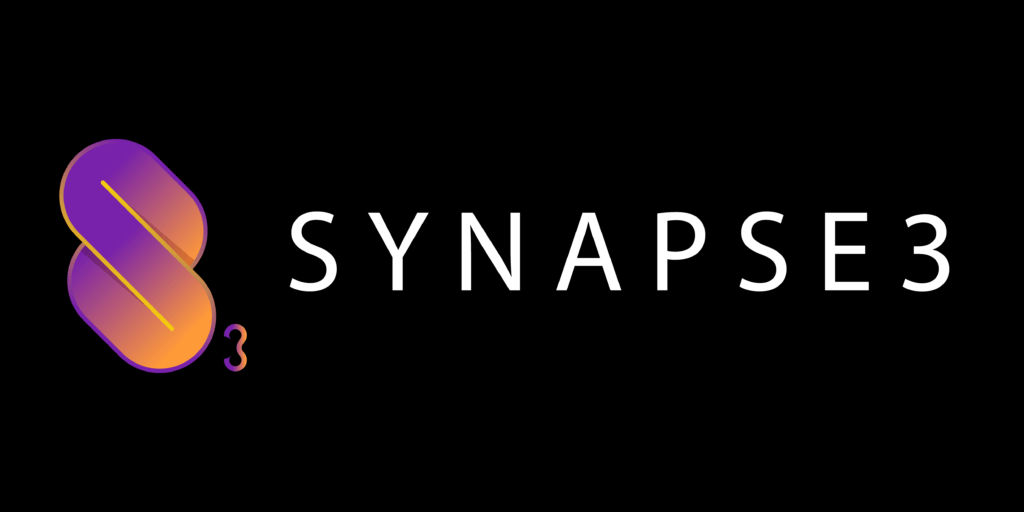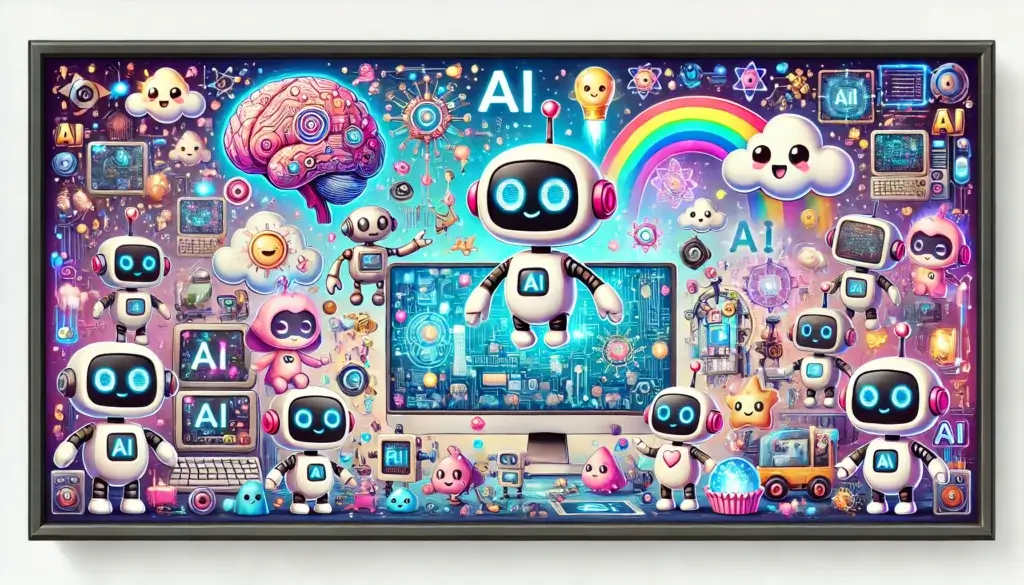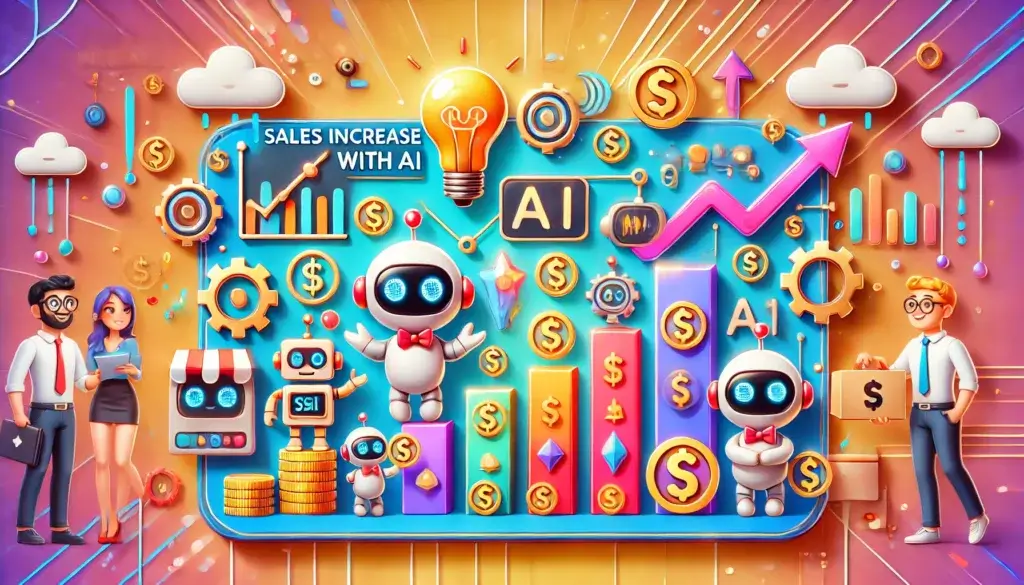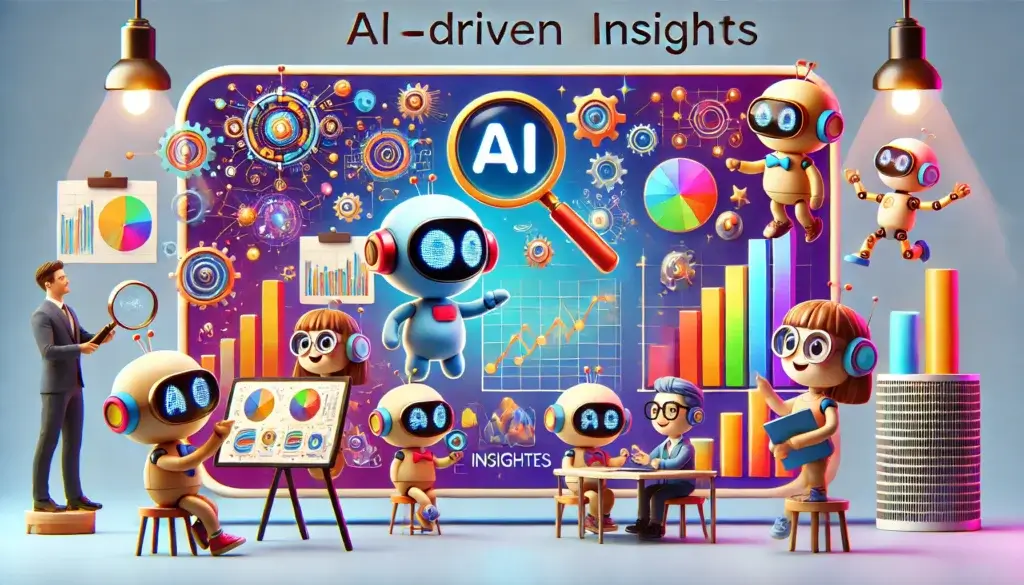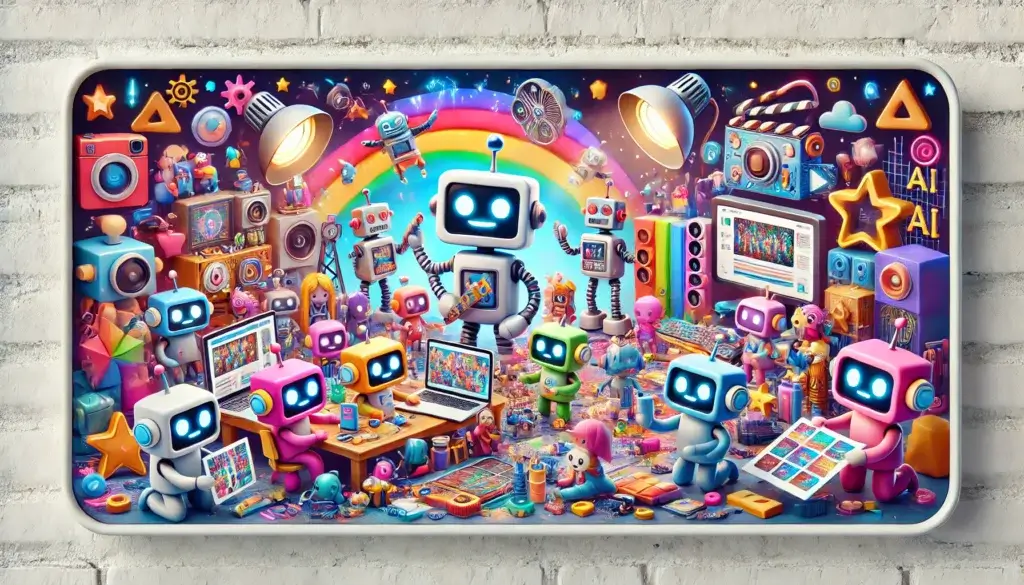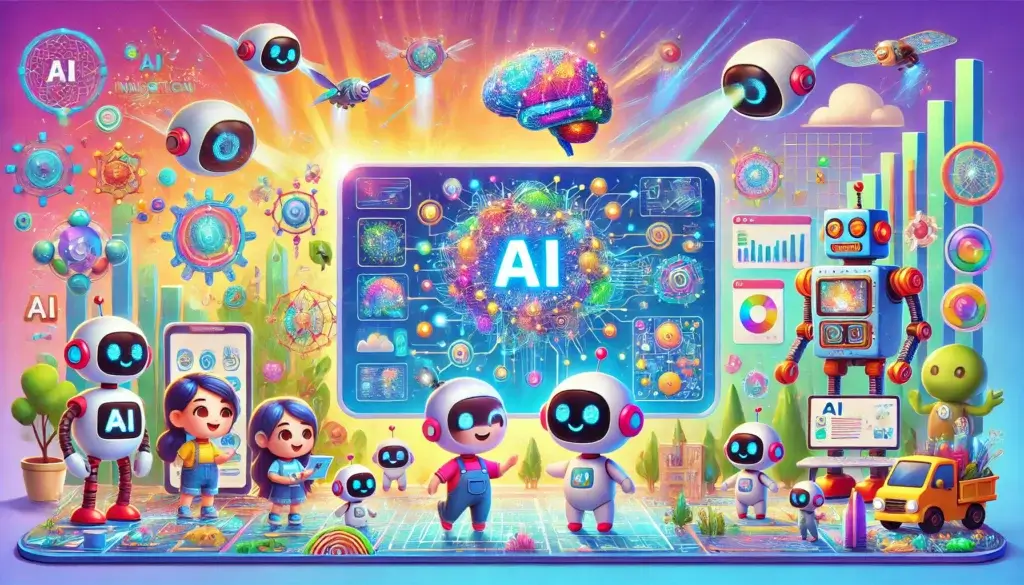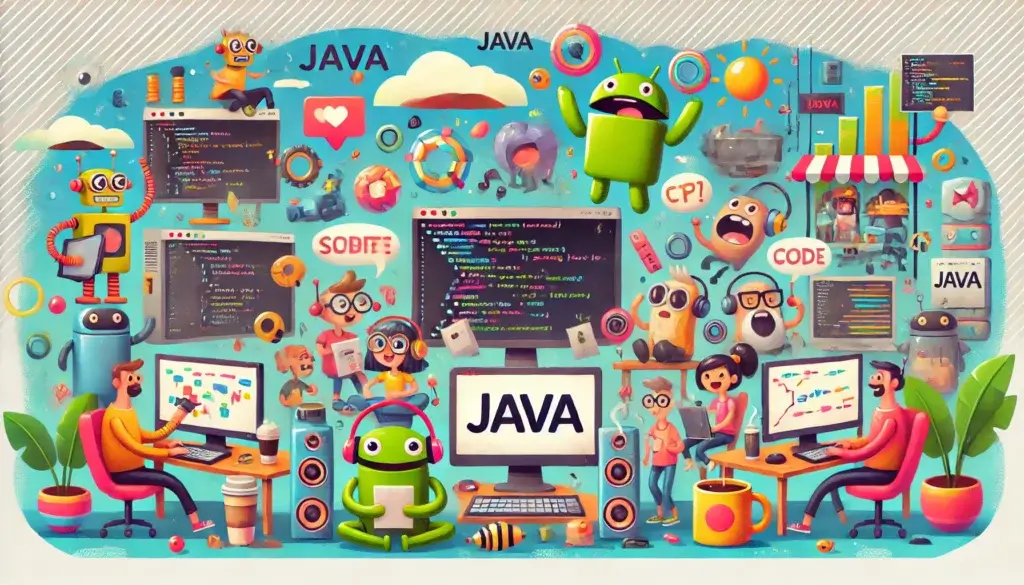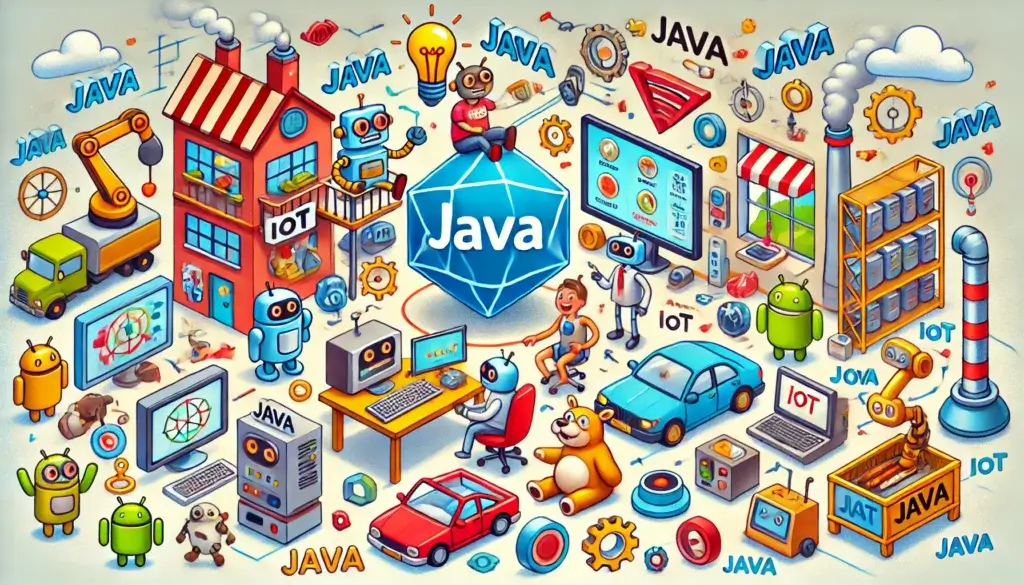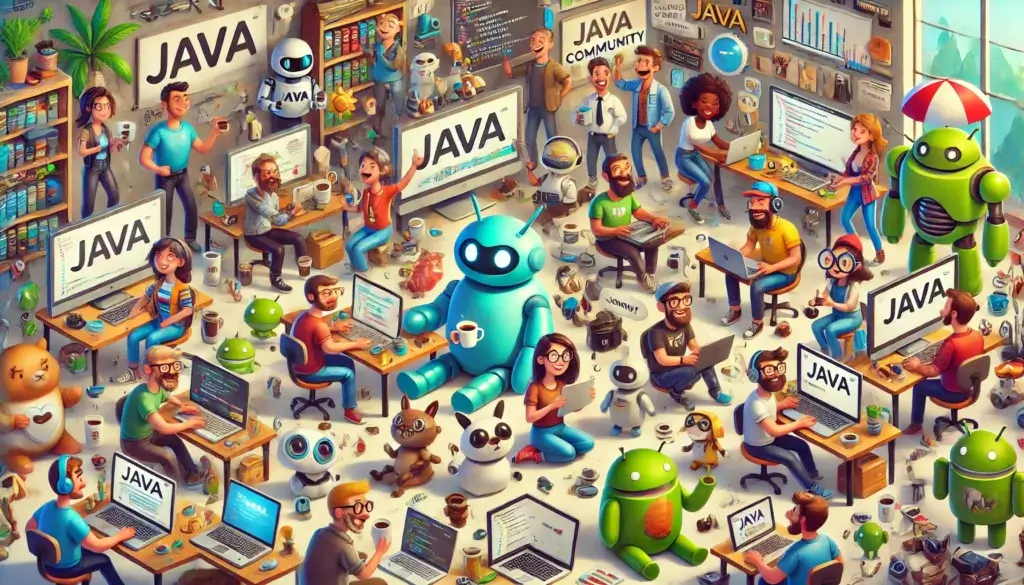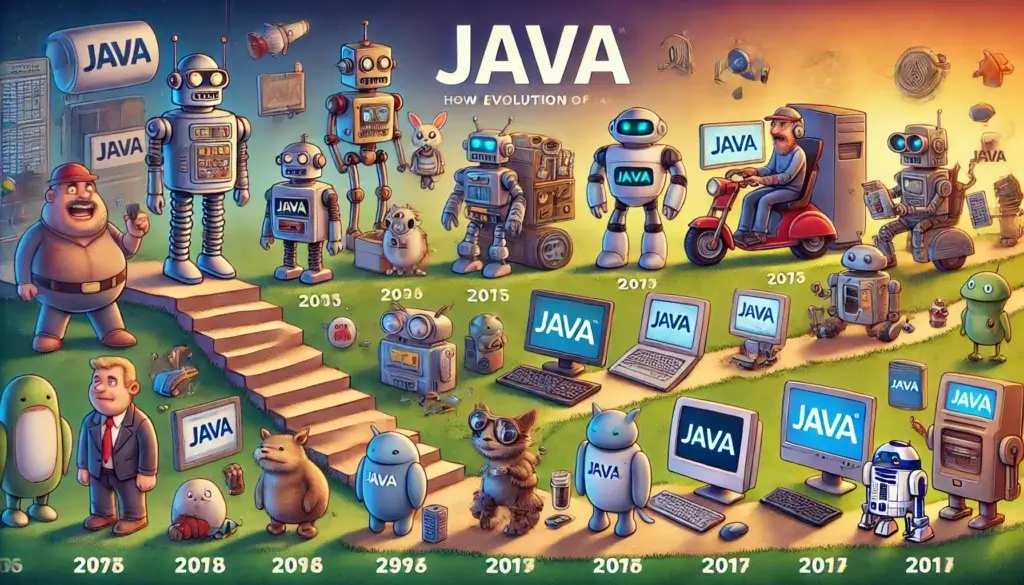Be Part of Tech: Top AI Tools for Every Need in 2025
The way we work, create, and connect is changing every day, and at the center of it all is artificial intelligence. AI isn’t just for tech enthusiasts or large companies anymore—it’s become an essential tool for anyone looking to unlock new levels of efficiency, creativity, and connection. Whether you’re designing a marketing campaign, streamlining your business operations, or exploring your creative side, there’s an AI tool to help make it easier, faster, and more effective.
In this article, I’ve rounded up the best AI tools for 2025, covering everything from content creation to personal organization, sales, and beyond. These aren’t just tools; they’re game-changers that can help you do more, achieve more, and maybe even find a little more time for yourself in the process. Let’s explore the innovations shaping our tech-forward future together.
1. Content Creation
Today, content creation is the currency of connection. From crafting a blog post, launching a product, or scripting a video, the demand for high-quality, engaging content has never been higher. But at the same time, let’s face the truth: content creation can be very time-consuming, mentally draining, and often daunting. That’s where AI steps in, not to replace your creativity, but to empower it. Today’s AI tools are the co-pilots, automating the mundane so you can focus on the magic.
Here are the top AI tools redefining content creation for 2025, each with its unique strengths and solutions.
Jasper.ai: The Creativity Catalyst
Jasper.ai is a powerhouse for writers, marketers, and entrepreneurs. Known for its intuitive interface and diverse writing capabilities, Jasper excels in generating blog articles, ad copy, email sequences, and even full-fledged eBooks.
- What It’s For: Jasper is perfect for anyone looking to produce polished, professional content quickly. Whether you’re a solo entrepreneur or part of a marketing team, this tool adapts to your style and needs.
- Key Features: Jasper’s standout feature is its ability to understand context and tone, ensuring your content aligns with your brand voice. Its “Boss Mode” allows users to create long-form content effortlessly.
- Pricing: Plans start with a basic package, but Boss Mode unlocks advanced features at a higher tier. Free trials are available for a hands-on experience.
- Curiosity: Jasper is backed by investors like Y Combinator and serves a growing community of creators worldwide. It’s a testament to the future of writing technology.
Writesonic: Marrying Creativity with SEO
Writesonic is the dream tool for creators who need their content to rank as well as it resonates. It combines cutting-edge writing capabilities with SEO insights, making it ideal for blogs, ad copy, and social media posts.
- What It’s For: This tool shines for marketers, bloggers, and social media managers who need SEO-friendly content that still feels personal.
- Key Features: Writesonic integrates AI writing with keyword optimization, helping you craft content that not only connects but converts. Its “Article Writer” feature is a favorite for long-form content.
- Pricing: Free and paid plans are available, with premium options unlocking advanced features like API access.
- Curiosity: Writesonic has an active roadmap fueled by user feedback, ensuring its updates stay relevant to modern marketing challenges.
Copy.ai: Sales and Marketing Powerhouse
Copy.ai is laser-focused on helping businesses generate sales and marketing content that captivates. From catchy product descriptions to engaging LinkedIn posts, this tool is all about driving results.
- What It’s For: Ideal for eCommerce owners, sales teams, and growth hackers, Copy.ai transforms ideas into actionable content.
- Key Features: The tool offers templates for various content types, a time-saving feature that eliminates writer’s block. Its team collaboration tools also make it a hit with agencies.
- Pricing: A free version is available, with paid plans starting at affordable monthly rates for small businesses.
- Curiosity: Copy.ai’s team is driven by a vision of democratizing creativity, making high-quality content accessible to all, regardless of experience or budget.
Easy-Peasy AI: The Social Media Prodigy
Easy-Peasy AI is a versatile, user-friendly tool designed to create content for social media, blog posts, and even text-to-speech transformations. It’s like having a Swiss Army knife for your content needs.
- What It’s For: Great for influencers, small business owners, and social media managers looking for quick, high-quality output.
- Key Features: The tool covers everything from writing captions to converting text into natural-sounding speech in multiple languages. Its social media scheduling capabilities streamline campaigns.
- Pricing: Plans range from free to premium, with the paid options offering expanded functionality and customization.
- Curiosity: Easy-Peasy AI’s ability to pivot between social media content and text-to-speech makes it a standout for multitasking creators.
Compose.ai: Effortless Text Generation
Compose.ai is a text-generation wizard that integrates seamlessly with your browser and word processors. It’s the perfect addition to any writer’s toolkit, offering on-the-go assistance.
- What It’s For: A go-to for professionals drafting emails, reports, or creative pieces, Compose.ai accelerates the writing process with intelligent suggestions.
- Key Features: Its autocomplete feature learns your writing style over time, offering smart suggestions that improve your workflow.
- Pricing: Free and premium options cater to individual and business needs.
- Curiosity: Compose.ai’s browser extensions bring AI directly into your everyday tools, making it a silent yet impactful game-changer.
Typli.ai: Simplifying SEO and Writing
Typli.ai is a robust platform for creating content that’s not just engaging but also optimized for search engines. It simplifies SEO for creators who want their content to reach the right audience.
- What It’s For: Perfect for bloggers and digital marketers aiming to combine compelling writing with effective SEO strategies.
- Key Features: Typli.ai’s built-in SEO analyzer ensures your content ranks well while maintaining a conversational tone.
- Pricing: Affordable plans cater to freelancers and small businesses.
- Curiosity: Typli.ai was designed with usability in mind, making it one of the most approachable tools for non-tech-savvy creators.
2. Personal Growth and Organisation
Let’s face it—life isn’t slowing down anytime soon. Between juggling responsibilities and chasing our dreams, staying organized feels like an art form. Thankfully, AI tools are here to turn the chaos into clarity. These aren’t just gadgets; they’re like having a personal assistant, life coach, and efficiency guru rolled into one. Whether you’re trying to carve out more time for your passions, streamline your daily grind, or simply keep your head above water, these tools are designed to do the heavy lifting, so you can focus on what truly matters.
Here’s a closer look at the AI-powered solutions helping us navigate life with grace and purpose in 2025.
Harpa.ai: Everyday Task Management Made Easy
Harpa.ai is the ultimate life-simplifier. Think of it as a personal assistant that lives in your browser, automating daily tasks and helping you stay on top of your priorities.
- What It’s For: Harpa.ai shines in automating web-based tasks like scheduling, reminders, and managing digital workflows. It’s perfect for anyone juggling a packed to-do list.
- Key Features: It integrates seamlessly with popular platforms like Gmail and Google Calendar, offering task suggestions based on your activity.
- Pricing: Harpa.ai offers free and premium plans, ensuring accessibility for both casual users and power users looking for advanced features.
- Curiosity: The developers behind Harpa.ai focus on simplicity, making the tool intuitive enough for beginners yet robust enough for tech-savvy professionals.
Notion AI: The Multifaceted Powerhouse
Notion AI takes an already incredible productivity platform and infuses it with artificial intelligence. It’s like having a brainstorming partner, note-taker, and organizer all in one.
- What It’s For: This tool is a dream for project managers, students, and entrepreneurs looking to streamline their planning and documentation processes.
- Key Features: Notion AI can summarize long documents, suggest task lists, and even generate content outlines for your projects.
- Pricing: Notion offers a free tier, but its AI features are available with paid plans that start at a reasonable price point.
- Curiosity: The tool’s popularity has exploded globally, with teams in tech, education, and creative industries adopting it as their go-to solution.
Evernote: The Classic Reimagined
Evernote has been a staple in the organization toolkit for years, and its AI-enhanced features bring a modern twist to a classic favorite.
- What It’s For: Ideal for professionals, students, and anyone needing a reliable digital notebook to organize thoughts, tasks, and projects.
- Key Features: Evernote uses AI to suggest relevant notes and reminders based on your inputs, making it easier to connect the dots in your workflow.
- Pricing: It offers a free basic plan and premium options for users seeking more storage and customization.
- Curiosity: Evernote’s team has embraced AI to stay relevant in a crowded market, proving that innovation and adaptability are key to longevity.
Rosebud AI: Creative Growth Unleashed
Rosebud AI brings an artistic twist to personal growth. While primarily known for its image and video creation capabilities, it’s also a tool for brainstorming and creativity.
- What It’s For: Perfect for creators, educators, and entrepreneurs who want to visualize ideas or enhance their presentations with stunning visuals.
- Key Features: Rosebud AI offers a suite of creative tools powered by cutting-edge machine learning, making it easier to turn ideas into reality.
- Pricing: Plans include free trials with premium subscriptions for users needing advanced capabilities.
- Curiosity: The team behind Rosebud AI is a blend of artists and engineers, ensuring a tool that’s as intuitive as it is innovative.
Rize: Your AI Productivity Coach
Rize is like having a personal productivity coach in your pocket. It combines AI and behavioral insights to help you stay focused, improve work habits, and track progress.
- What It’s For: Ideal for freelancers, remote workers, and anyone looking to build better work routines without micromanaging themselves.
- Key Features: Rize provides detailed analytics on how you spend your time and suggests actionable improvements to enhance productivity.
- Pricing: A subscription-based model makes it accessible, with a free trial for new users.
- Curiosity: The team at Rize focuses on user feedback, frequently rolling out updates that reflect what real users need to stay productive.
Timely App: Automated Time Tracking
Timely App transforms the tedious task of time tracking into an effortless process. Its AI capabilities make it a standout tool for improving focus and managing time.
- What It’s For: Ideal for consultants, teams, and creatives who bill by the hour or want to understand where their time goes.
- Key Features: Timely uses AI to track how you spend your time across apps, generating detailed reports that help you optimize your day.
- Pricing: The app offers a free trial, with subscription plans tailored for individuals and businesses.
- Curiosity: Timely’s development team is deeply committed to ethical AI, ensuring user data remains private and secure.
3. Business Automation
Managing a business today comes with its fair share of complexities. From staying on top of day-to-day tasks to strategizing for long-term growth, there’s always something demanding your attention. Business automation tools offer a way to simplify the workload, taking care of the repetitive processes so you and your team can focus on the bigger picture. These tools don’t just save time—they create space for innovation, better decision-making, and a smoother flow to your operations.
Here are some of the most impactful AI-powered tools helping businesses stay organized and efficient in 2025.
CheatLayer: Solving the Impossible
CheatLayer is the ultimate problem-solver for business automation. By combining its unique AI model, Atlas-1, with a custom-trained version of GPT-4, it creates bespoke solutions for challenges that traditional tools can’t handle.
- What It’s For: Ideal for entrepreneurs and businesses looking to tackle complex automation tasks that require creative solutions.
- Key Features: CheatLayer allows you to automate virtually anything on the web, from scraping data to integrating apps in unconventional ways.
- Pricing: The tool offers various plans, including affordable options for small businesses and advanced tiers for enterprises.
- Curiosity: CheatLayer’s innovation lies in its flexibility. It works like a virtual assistant capable of solving problems that would otherwise require expensive custom coding.
Revealbot: Simplifying Ad Campaigns
Revealbot is a game-changer for digital marketers managing ad campaigns. It automates and optimizes advertising processes, saving time and improving ROI.
- What It’s For: Perfect for digital agencies, eCommerce brands, and marketers handling multi-platform ad campaigns.
- Key Features: Revealbot automates ad management on platforms like Facebook, Google, and TikTok. Its AI-driven analytics suggest improvements to maximize campaign performance.
- Pricing: The tool offers scalable plans to cater to startups and larger enterprises, with a free trial to explore its potential.
- Curiosity: Revealbot’s team has earned a reputation for staying ahead of the curve, frequently rolling out updates to keep pace with the latest advertising trends.
Zapier: The Workflow Wizard
Zapier is the go-to tool for anyone who wants to automate workflows without a single line of code. It connects over 5,000 apps, making it one of the most versatile automation tools on the market.
- What It’s For: Ideal for small businesses, freelancers, and anyone who juggles multiple tools in their daily operations.
- Key Features: With “Zaps,” users can set up triggers and actions to automate tasks like transferring data between apps, sending notifications, or scheduling updates.
- Pricing: Zapier offers a free plan for basic needs and tiered pricing for users requiring advanced integrations and higher usage limits.
- Curiosity: Zapier’s success is rooted in its user-first approach, consistently adding app integrations based on community demand.
AlliAI: Marketing Agency Hero
AlliAI is a marketing agency’s secret weapon, designed to automate content management and supercharge SEO efforts. It reduces the manual workload while delivering measurable results.
- What It’s For: Best suited for digital marketers, agencies, and SEO professionals managing multiple campaigns.
- Key Features: AlliAI automates on-page and off-page SEO tasks, monitors keyword rankings, and even generates optimization suggestions tailored to specific goals.
- Pricing: Flexible pricing makes it accessible for both small agencies and large marketing teams.
- Curiosity: AlliAI’s focus on marketing efficiency stems from its roots in data science, ensuring it delivers actionable insights that matter.
MAKE: The Workflow Simplifier
MAKE, formerly Integromat, offers advanced automation capabilities to simplify even the most complex workflows. It’s designed to handle intricate logic and data manipulation.
- What It’s For: A favorite among developers, tech-savvy teams, and businesses needing custom automation solutions.
- Key Features: MAKE provides drag-and-drop tools to build automation scenarios, from data syncing to real-time notifications.
- Pricing: The tool offers a free tier and premium options for businesses with higher processing needs.
- Curiosity: MAKE’s visual interface sets it apart, making it accessible for non-tech users while still powerful enough for advanced automations.
Copy AI: Beyond Content Creation
Copy AI isn’t just a content creation tool. It’s an all-around business taskmaster, helping streamline processes like email drafting, customer outreach, and internal communications.
- What It’s For: Perfect for sales teams, HR departments, and entrepreneurs who need fast, professional-quality content on demand.
- Key Features: From crafting compelling email templates to generating engaging customer responses, Copy AI boosts productivity across various business functions.
- Pricing: Copy AI offers a free trial and tiered plans for individuals and teams.
- Curiosity: The tool’s development team is dedicated to user experience, frequently enhancing features based on feedback to ensure it remains versatile.
4. Data Enrichment
Data has become a cornerstone of how we make decisions and connect with people, but raw numbers and facts don’t tell the whole story. Data enrichment is about adding depth and context, turning basic information into something truly useful. It helps businesses get a clearer picture of their audience, fine-tune their strategies, and create experiences that feel personal and thoughtful. With the right tools, enriched data becomes more than just numbers—it becomes a powerful ally in building smarter, stronger relationships.
Here’s a look at some of the best AI tools transforming how we approach data enrichment.
Clay: AI-Driven Data Enrichment for Targeted Outreach
Clay is a dynamic platform that automates data enrichment, lead scoring, and personalized messaging, streamlining outreach and growth efforts.
- What It’s For: Ideal for sales and marketing teams seeking to enhance lead data and automate engagement workflows.
- Key Features: Clay integrates with multiple data sources to provide detailed lead profiles, automates research tasks through AI, and offers seamless CRM integration for efficient data management.
- Pricing: Offers a range of subscription plans to accommodate different business sizes and needs.
- Curiosity: Clay’s AI capabilities allow it to perform tasks that typically require manual research, significantly reducing the time and effort needed for data enrichment.
Apollo.io: Comprehensive Sales Intelligence
Apollo.io is a sales engagement platform that provides tools for prospecting, engaging, and managing customer relationships, with a robust database of contacts and companies.
- What It’s For: Designed for sales professionals aiming to streamline their prospecting and outreach processes.
- Key Features: Offers a comprehensive contact database, email automation, analytics, and integrates with platforms like Clay for enhanced data enrichment.
- Pricing: Provides various pricing tiers, including a free plan with limited features and paid plans for advanced capabilities.
- Curiosity: Apollo.io sources its data through proprietary algorithms, public data crawling, and partnerships, ensuring a vast and up-to-date database.
Bardeen AI: Automate, Integrate, and Connect
Bardeen AI is a powerful browser extension designed to automate repetitive tasks across various web applications, enhancing productivity and efficiency.
- What It’s For: Suitable for professionals looking to automate workflows and integrate multiple apps without coding.
- Key Features: Automates data extraction, integrates with over 100 apps, and offers AI-driven prompts for personalized interactions.
- Pricing: Offers a free plan with essential features and premium plans for advanced automation needs.
- Curiosity: Bardeen’s AI capabilities enable it to perform complex automations, such as exporting leads from LinkedIn to Google Sheets, saving users significant time.
Rose.ai: Advanced Data Analysis
Rose.ai is an AI-powered platform that simplifies data analysis, enabling users to extract insights and make data-driven decisions with ease.
- What It’s For: Ideal for analysts and business professionals seeking to streamline data analysis processes.
- Key Features: Provides tools for data visualization, integrates with various data sources, and offers AI-driven insights to support decision-making.
- Pricing: Offers flexible pricing plans, including options for individual users and enterprises.
- Curiosity: Rose.ai‘s intuitive interface allows users to perform complex data analyses without requiring advanced technical skills.
Momentum.io: AI-Powered Sales and Customer Insights
Momentum.io leverages AI to provide sales teams with actionable insights, enhancing customer interactions and sales strategies.
- What It’s For: Designed for sales teams aiming to improve engagement and optimize sales processes.
- Key Features: Offers real-time analytics, AI-driven recommendations, and integrates with existing CRM systems to provide a unified view of customer data.
- Pricing: Provides various pricing options tailored to different business needs, with details available upon request.
- Curiosity: Momentum.io‘s AI analyzes customer interactions to identify patterns and suggest optimal engagement strategies.
Clearbit: Real-Time Data Enrichment
Clearbit provides real-time data enrichment, helping businesses enhance their customer databases with accurate and up-to-date information.
- What It’s For: Ideal for marketing and sales teams looking to enrich CRM data and improve personalization.
- Key Features: Offers real-time data enrichment, lead scoring, and integrates with various platforms to provide comprehensive customer profiles.
- Pricing: Offers customized pricing plans based on specific business requirements.
- Curiosity: Clearbit’s extensive data network allows it to provide detailed information, including company size, industry, and technologies used.
ZoomInfo: Comprehensive Business Data
ZoomInfo offers comprehensive business data to enrich CRM systems, aiding in more effective decision-making and targeted outreach.
- What It’s For: Designed for sales and marketing professionals seeking detailed company and contact information.
- Key Features: Provides a vast database of business contacts, company insights, and integrates with CRM systems for seamless data enrichment.
- Pricing: Offers various subscription plans, with pricing details available upon inquiry.
- Curiosity: ZoomInfo’s platform is continually updated, ensuring users have access to the most current business information available.
5. Sales Outreach and Automation
Sales outreach has always been about finding the right balance—knowing when to connect, what to say, and how to keep the conversation going. It’s not just about closing deals; it’s about building relationships that last. AI-powered tools are making this process easier and smarter, helping sales teams personalize their communication while automating the repetitive tasks that eat up time. The result? A smoother workflow, stronger connections, and better outcomes for everyone involved.
Here’s a closer look at the AI tools that are reshaping sales outreach and automation in 2025.
WriteCream: Personalized Emails in Seconds
WriteCream is your secret weapon for crafting emails that don’t just get opened but resonate. Leveraging AI, this tool creates highly personalized content that feels human and authentic.
- What It’s For: Ideal for sales teams, entrepreneurs, and marketers who want to enhance email campaigns with personalized touches.
- Key Features: WriteCream generates email content tailored to individual recipients, incorporates unique details from their profiles, and suggests follow-ups to keep conversations alive.
- Pricing: It offers free and paid plans, with premium tiers unlocking features like bulk email personalization and advanced analytics.
- Curiosity: WriteCream is designed with non-writers in mind, making it a favorite among startups and solopreneurs looking to level up their outreach.
Apollo.io: Efficient Contact Recommendations
Apollo.io takes the guesswork out of prospecting by providing a vast database of verified leads and AI-powered recommendations. This tool connects you with the right people at the right time.
- What It’s For: Perfect for sales professionals looking to streamline prospecting and expand their reach.
- Key Features: Apollo.io’s standout features include its contact enrichment capabilities, email sequence automation, and real-time engagement tracking.
- Pricing: It offers a free plan with basic features and paid plans for access to its full contact database and advanced analytics.
- Curiosity: Apollo.io’s data-driven approach allows teams to prioritize leads that are most likely to convert, saving time and increasing efficiency.
Crystal Knows: Pre-Meeting Personality Insights
Crystal Knows is a unique tool that leverages AI to analyze personality traits, helping you tailor your communication to resonate better with your prospects.
- What It’s For: Ideal for relationship-driven sales reps and professionals who want to adapt their messaging based on personality insights.
- Key Features: Crystal Knows provides detailed personality profiles, suggests communication strategies, and integrates with tools like LinkedIn and Gmail for seamless use.
- Pricing: It offers a free basic plan and premium options for team-wide usage and advanced features.
- Curiosity: Crystal Knows applies DISC personality profiling to predict how your prospect prefers to communicate, giving you a tactical advantage in any conversation.
HubSpot Sales Hub: The All-in-One Solution
HubSpot Sales Hub is a comprehensive sales platform that integrates AI to automate email sequences, score leads, and manage your sales pipeline more effectively.
- What It’s For: Ideal for businesses of all sizes looking for an end-to-end sales solution.
- Key Features: HubSpot Sales Hub includes tools for automated outreach, pipeline visualization, and AI-driven analytics to identify opportunities and forecast performance.
- Pricing: HubSpot offers a free plan with basic CRM features and scalable pricing tiers for businesses needing advanced automation.
- Curiosity: HubSpot’s ecosystem extends beyond sales, allowing seamless integration with marketing, customer service, and CMS tools for a unified experience.
Outreach.io: Optimizing Sales Communication
Outreach.io is built for sales teams that want to optimize their communication efforts with AI-powered insights. It streamlines workflows and boosts engagement with actionable data.
- What It’s For: Designed for enterprise-level teams managing large-scale outreach campaigns.
- Key Features: Outreach.io automates follow-ups, analyzes engagement data, and provides AI-driven recommendations for improving email performance.
- Pricing: Outreach.io offers tailored pricing based on team size and feature requirements, with demos available for interested users.
- Curiosity: Outreach.io’s integration capabilities include CRM systems like Salesforce and tools like ZoomInfo, creating a powerful data synergy for sales teams.
Nooks: Your AI Sales Assistant
Nooks is the AI sales assistant you didn’t know you needed. It aligns seamlessly with your CRM and helps automate routine tasks, freeing your team to focus on building relationships.
- What It’s For: Best suited for sales teams looking to scale their efforts without increasing workload.
- Key Features: Nooks automates meeting scheduling, follow-ups, and data entry while providing insights to improve sales interactions.
- Pricing: It offers a free trial, with subscription plans available for teams needing advanced customization.
- Curiosity: Nooks is celebrated for its user-friendly interface and ability to integrate effortlessly with popular CRM tools, making it a favorite among growing sales teams.
6. CRM and Email Marketing Creation and Automation
Personalization has become the cornerstone of modern business, and connecting with your audience in meaningful ways is essential. CRM and email marketing automation tools make this easier by giving you the power to organize customer relationships, refine your outreach, and create campaigns that genuinely connect. With AI guiding the way, these tools help you work smarter, ensuring your messages are timely, relevant, and impactful.
Here’s a look at two leading platforms shaping the future of CRM and email marketing automation.
HubSpot CRM: The All-in-One Growth Machine
HubSpot CRM is a powerhouse that combines customer relationship management with AI-driven insights and marketing automation. It’s not just a tool; it’s an ecosystem designed to grow with your business.
- What It’s For: Ideal for businesses of all sizes, HubSpot CRM is the ultimate tool for managing customer interactions, tracking leads, and automating marketing campaigns. From startups to established enterprises, it’s built to scale with your needs.
- Key Features: HubSpot CRM integrates seamlessly with email marketing, sales pipelines, and customer support tools. Its AI-powered analytics help you understand customer behavior, forecast sales, and optimize marketing strategies. Features like lead scoring and workflow automation make it a favorite for sales and marketing teams.
- Pricing: HubSpot offers a free version that’s perfect for small teams, with paid tiers unlocking advanced functionalities like custom reporting and marketing automation for larger operations.
- Curiosity: HubSpot’s commitment to innovation is evident in its regular product updates and partnerships with leading tech companies. Its all-in-one approach reduces the need for multiple tools, creating a cohesive experience that saves time and effort.
Mailchimp: The Email Marketing Trailblazer
Mailchimp has long been a leader in email marketing, and with its AI-enhanced features, it continues to set the standard for creating personalized and effective campaigns. Whether you’re just starting out or managing a large audience, Mailchimp delivers the tools you need.
- What It’s For: Mailchimp is ideal for businesses, creators, and marketers looking to connect with their audience through data-driven email campaigns. It’s especially popular among small to medium-sized businesses for its ease of use and robust features.
- Key Features: Mailchimp’s AI capabilities include audience segmentation, predictive analytics, and content optimization. It offers pre-built templates for quick email creation and A/B testing to refine your approach. Its reporting tools provide actionable insights into campaign performance, helping you tweak and improve over time.
- Pricing: Mailchimp offers a free plan for beginners, with paid options that scale based on audience size and feature requirements. Advanced plans include multi-step automations and premium support.
- Curiosity: Mailchimp started as an email marketing service but has evolved into a comprehensive marketing platform. Its ongoing investment in AI ensures that users stay ahead of trends, making it a trusted tool for businesses worldwide.
7. Meeting Notetakers
With virtual meetings and collaborations becoming the norm, keeping track of what’s discussed is more important than ever. Accurate notes ensure that action items don’t slip through the cracks and that everyone stays on the same page. AI meeting notetakers make this effortless by capturing every detail and turning conversations into organized, searchable insights. They let you focus on participating in the discussion rather than worrying about taking notes.
Here are some of the top AI tools making meeting documentation smarter and simpler in 2025.
Fireflies.ai: Intelligent Meeting Capture
Fireflies.ai is a smart meeting assistant designed to make capturing and sharing meeting insights effortless. It automatically records, transcribes, and organizes your meetings so you can focus on the discussion rather than the details.
- What It’s For: Ideal for professionals and teams who want a reliable way to capture and review meeting conversations, whether for brainstorming, client calls, or team syncs.
- Key Features: Fireflies.ai integrates with major video conferencing platforms like Zoom, Google Meet, and Microsoft Teams. It creates searchable transcripts and allows users to highlight, comment, and share important sections.
- Pricing: A free plan offers basic transcription features, with premium plans unlocking advanced integrations, extended storage, and team collaboration tools.
- Curiosity: Fireflies.ai is celebrated for its ability to adapt to different accents and tones, making it a favorite for global teams. Its focus on seamless collaboration has earned it a reputation as a must-have productivity tool.
Fathom: Transcription with Context
Fathom takes meeting notetaking to the next level by focusing on context and actionable insights. It doesn’t just record what was said—it helps teams understand why it matters.
- What It’s For: Perfect for teams that need to track decisions, follow up on action items, and maintain alignment across departments.
- Key Features: Fathom highlights key moments during meetings, generates summaries, and organizes notes into categories like “decisions made” or “next steps.”
- Pricing: Offers free trials and paid plans that include premium features like team sharing and integration with CRMs.
- Curiosity: Fathom’s development team emphasizes user feedback, ensuring the tool evolves to meet the real needs of its users, especially in fast-paced environments.
Otter.ai: Collaboration-Friendly Transcription
Otter.ai is a robust transcription tool that prioritizes collaboration. It’s more than just a transcription service; it’s a collaborative workspace for meeting notes.
- What It’s For: Designed for teams and individuals who rely on accurate and organized meeting notes for their workflows.
- Key Features: Otter.ai provides real-time transcription, highlights speaker identification, and allows multiple users to collaborate on notes during or after the meeting.
- Pricing: A free tier offers basic functionality, while premium plans include advanced features like custom vocabulary and team management tools.
- Curiosity: Otter.ai has a strong focus on education and enterprise clients, making it a staple in classrooms, boardrooms, and beyond.
Turboscribe.ai: Fast & Accurate Audio-to-Text Conversion
Turboscribe.ai is designed for speed and precision, turning audio into text in record time. It’s the go-to tool for professionals who need detailed transcriptions on demand.
- What It’s For: Ideal for journalists, researchers, and content creators who need quick and accurate transcription of interviews, podcasts, or meetings.
- Key Features: Turboscribe.ai offers support for multiple languages, time-stamped transcriptions, and export options in various formats.
- Pricing: A pay-as-you-go model makes it accessible for occasional users, with subscription plans available for frequent transcribers.
- Curiosity: The platform’s machine learning model is continuously refined, ensuring it stays ahead of industry standards for transcription accuracy.
Loom AI: Summarizing Presentations and Transcriptions
Loom AI takes a unique approach by focusing on summarizing presentations and meetings, making it an excellent tool for capturing the essence of lengthy discussions.
- What It’s For: Best suited for teams that want concise summaries of their meetings or individuals who need to catch up on missed presentations.
- Key Features: Loom AI extracts key points from meetings and presentations, turning them into digestible summaries that are easy to share and review.
- Pricing: It offers a free tier with basic summaries and paid plans for more advanced features like detailed analytics and team collaboration.
- Curiosity: Loom AI’s integration with project management tools like Asana and Trello makes it a seamless addition to any productivity stack.
8. Multimedia Editing and Creation
Visual content has become the heart of how we communicate and connect. From videos to eye-catching designs, creating engaging multimedia isn’t just for creatives anymore—it’s a skill everyone can leverage. AI tools are stepping in to make the process smoother, faster, and more accessible, helping you bring your ideas to life without getting bogged down by technical hurdles. They’re here to support your creativity and take your content to the next level.
Here’s a roundup of the best AI tools making multimedia editing and creation a breeze in 2025.
Kaiber.ai: Transforming Multimedia Content Effortlessly
Kaiber.ai is a trailblazer in multimedia creation, offering tools to turn ideas into stunning visuals. From video edits to music-driven animations, it enables creators to push the boundaries of storytelling.
- What It’s For: Ideal for filmmakers, content creators, and marketers who want to transform static concepts into dynamic, eye-catching videos.
- Key Features: Kaiber.ai’s music video generator stands out, syncing visuals perfectly to audio. Its customization options allow creators to tailor every detail to fit their vision.
- Pricing: Offers a free trial for exploration, with premium plans for professionals needing advanced capabilities.
- Curiosity: Kaiber.ai’s team includes artists and tech innovators, ensuring the tool bridges creativity and functionality seamlessly.
Vidyo.ai: Streamlined Editing for Social Media
Vidyo.ai is a social media creator’s dream. This tool simplifies video editing, helping you create bite-sized, shareable content tailored for platforms like Instagram and TikTok.
- What It’s For: Perfect for influencers, marketers, and businesses aiming to maximize their social media engagement.
- Key Features: Vidyo.ai provides automatic captioning, video resizing for different platforms, and AI-powered scene selection to highlight the most engaging moments.
- Pricing: Free and affordable subscription options make it accessible for creators at any stage.
- Curiosity: Vidyo.ai’s development team continuously updates features to align with emerging social media trends, making it a forward-thinking tool.
Adobe Firefly: Cutting-Edge Image Generation
Adobe Firefly is the latest innovation from Adobe’s creative suite, focusing on AI-powered image generation. It brings your visual concepts to life with unmatched precision and creativity.
- What It’s For: Best for designers, artists, and marketers who need high-quality visuals without starting from scratch.
- Key Features: Firefly offers text-to-image capabilities, background removal, and advanced customization tools. It integrates seamlessly with Adobe’s other products, like Photoshop and Illustrator.
- Pricing: Included in Adobe’s Creative Cloud subscription, with options for individual and team plans.
- Curiosity: Firefly is the result of Adobe’s extensive research into generative AI, showcasing their commitment to empowering creators with cutting-edge tools.
Fliki.ai: Seamless Text-to-Video Creation
Fliki.ai is a powerful tool for turning written content into engaging videos. It’s perfect for repurposing blogs, articles, or scripts into shareable visual stories.
- What It’s For: Ideal for marketers, educators, and businesses looking to diversify their content formats.
- Key Features: Fliki.ai provides lifelike voiceovers, dynamic visuals, and text animations that make storytelling more interactive.
- Pricing: Offers a free tier with basic features and premium plans for enhanced customization and output quality.
- Curiosity: Fliki.ai’s focus on accessibility ensures even non-tech-savvy users can create professional-grade videos.
Pictory: Simplifying Video Editing for Creators
Pictory is an AI-driven video editor that helps creators craft visually appealing content quickly and efficiently. It’s especially useful for marketers aiming to captivate audiences with minimal effort.
- What It’s For: Designed for solopreneurs, agencies, and social media managers needing to produce polished video content.
- Key Features: Pictory automates tasks like cutting, trimming, and adding captions, making it an all-in-one video creation platform.
- Pricing: Free and premium plans cater to creators of all scales, with advanced tiers offering collaboration tools.
- Curiosity: Pictory’s user-friendly interface has made it a popular choice for beginners and seasoned creators alike.
Canva’s Magic Studio: Redefining Design Simplicity
Canva’s Magic Studio is an evolution of the beloved design platform, integrating AI to simplify complex design tasks. It empowers users to create professional-quality visuals effortlessly.
- What It’s For: Perfect for businesses, educators, and creators who need on-brand visuals quickly.
- Key Features: Magic Design and Magic Edit enable users to generate layouts, edit images, and create visuals tailored to specific needs. Its collaboration tools make it a hit with teams.
- Pricing: Free plans are available, with affordable subscriptions for premium features and brand kits.
- Curiosity: Canva’s commitment to accessibility has democratized design, with Magic Studio being a testament to their user-first philosophy.
Pika.art: Video Editing Simplified
Pika.art is a rising star in video editing, specializing in creating social media-friendly content. It’s fast, intuitive, and perfect for generating short-form videos.
- What It’s For: Best for influencers, small businesses, and creators focused on growing their online presence.
- Key Features: Pika.art offers drag-and-drop editing, customizable templates, and AI enhancements like background removal and scene transitions.
- Pricing: Includes a free plan and affordable premium options for advanced users.
- Curiosity: Pika.art’s development team draws inspiration from user feedback, ensuring the tool evolves to meet creator demands.
Offeo: Rapid Multimedia Content Creation
Offeo is a speed-centric tool designed to help creators churn out multimedia content without compromising quality. Its templates and AI-driven features make it a top choice for busy marketers.
- What It’s For: Perfect for startups, freelancers, and marketers needing quick turnaround times for content production.
- Key Features: Offeo offers pre-designed templates, one-click animations, and customizable branding options to ensure your content stands out.
- Pricing: Affordable subscription plans make it accessible to creators across industries.
- Curiosity: Offeo’s simplicity belies its power, with a user base that spans entrepreneurs to enterprise teams.
9. Image and Avatar Generation
As we embrace more digital spaces, how we present ourselves and create visuals takes on new meaning. AI is stepping up as a creative partner, helping us craft everything from realistic avatars to imaginative artwork. Whether you’re working on a virtual identity, enhancing your brand, or simply exploring artistic possibilities, these tools make it easier to turn ideas into captivating visuals. They’re bringing creativity to everyone’s fingertips, no matter their skill level.
Here are some of the most exciting tools redefining image and avatar creation in 2025.
Midjourney: Artistic Image Generation
Midjourney is a cutting-edge AI tool that brings your imagination to life. It specializes in generating artistic and visually stunning images from textual descriptions.
- What It’s For: Ideal for artists, designers, and creatives looking to explore new dimensions of digital art or generate unique visuals for projects.
- Key Features: Midjourney offers intricate detail, creative filters, and the ability to produce images that blur the lines between reality and fantasy.
- Pricing: Free trials are available, with premium plans offering higher-resolution outputs and commercial usage rights.
- Curiosity: Midjourney’s community-driven development keeps it fresh, with users actively sharing creations and inspiring new use cases.
Photo AI: AI-Enhanced Avatars and Photo Edits
Photo AI simplifies the process of creating AI-enhanced avatars and making professional-grade photo edits. It’s a favorite for personal branding and content creators.
- What It’s For: Perfect for individuals and businesses wanting polished, visually appealing images for profiles, marketing, or creative projects.
- Key Features: Offers tools for background removal, lighting adjustments, and avatar customization that feel intuitive and powerful.
- Pricing: Provides free basic features, with premium tiers unlocking advanced editing tools and bulk processing options.
- Curiosity: Photo AI’s team is dedicated to bridging creativity and technology, frequently introducing updates that keep the tool ahead of trends.
Ready Player Me: Personal 3D Avatars for Virtual Worlds
Ready Player Me makes it possible to create stunning 3D avatars that can travel across virtual worlds and platforms. Its focus on interoperability sets it apart in the avatar space.
- What It’s For: Ideal for gamers, metaverse enthusiasts, and creators building immersive virtual experiences.
- Key Features: Allows users to design detailed avatars that are compatible with games, VR environments, and online platforms.
- Pricing: Offers free avatar creation, with paid options for customizations and branded solutions.
- Curiosity: Ready Player Me’s avatars have been adopted by major metaverse platforms, signaling its influence in the digital identity ecosystem.
Dreampic.ai: Customizable and Creative Avatar Options
Dreampic.ai brings a playful yet professional approach to avatar creation. With a focus on personalization, it allows users to craft avatars that reflect their style and personality.
- What It’s For: Best for content creators, influencers, and anyone looking to make a memorable digital impression.
- Key Features: Includes a wide range of templates, artistic styles, and customization tools to make avatars truly unique.
- Pricing: Free trials are available, with premium plans offering expanded features and higher-resolution exports.
- Curiosity: Dreampic.ai’s user-friendly interface has made it a hit with both tech-savvy users and beginners looking to dive into AI-generated art.
DALL-E: Pioneering Text-to-Image Creativity
DALL-E, developed by OpenAI, is the pioneer of text-to-image generation, turning words into incredible visuals. It’s a tool that blends accessibility with groundbreaking technology.
- What It’s For: Perfect for marketers, educators, and creatives needing visuals that align with specific ideas or themes.
- Key Features: DALL-E’s ability to interpret complex prompts and generate highly detailed images makes it a favorite for diverse applications.
- Pricing: Free credits are available monthly, with additional credits purchasable for heavy users.
- Curiosity: DALL-E’s recent updates have enhanced its ability to produce more photorealistic and contextually accurate images, making it a cornerstone of AI creativity.
Prisma AI (Lensa): Enhancing Photos & Creating Unique Avatars
Prisma AI, with its popular Lensa app, revolutionizes the way we edit photos and create avatars. Its intuitive tools make high-end edits achievable with a few taps.
- What It’s For: Great for social media enthusiasts, photographers, and anyone looking to elevate their digital visuals.
- Key Features: Prisma AI excels in artistic filters, retouching tools, and avatar generation. Its AI-driven suggestions simplify the editing process while maintaining creative control.
- Pricing: Free features are robust, with premium subscriptions adding more advanced tools and options.
- Curiosity: Prisma AI’s Lensa app gained viral attention for its AI avatar feature, blending artistry and realism in ways that captivated millions.
Magnific.ai: Upscaling and Enhancing Image Quality
Magnific.ai focuses on taking your visuals to the next level by enhancing resolution, refining details, and transforming low-quality images into high-definition masterpieces.
- What It’s For: Ideal for photographers, designers, and businesses needing sharp, high-resolution visuals for professional use.
- Key Features: Includes AI-powered upscaling, noise reduction, and creative reimagining tools that allow users to refine or completely transform their images.
- Pricing: Offers free trials with subscription plans for advanced features like batch processing and higher export quality.
- Curiosity: Magnific.ai’s technology has been adopted by major creative agencies, demonstrating its value in professional-grade visual enhancement.
10. Ad and Marketing Management
Marketing has always been about connecting with the right audience at the right time, but the game has changed. AI tools are transforming how we approach campaigns, making them smarter, more efficient, and highly tailored. From designing impactful ads to managing influencer collaborations and analyzing performance, these platforms help marketers simplify complex tasks while amplifying creativity and results. It’s no longer just about working harder—it’s about working smarter.
Here’s a look at some of the leading AI tools shaping the future of ad and marketing management in 2025.
Adcreative.ai: Data-Driven Ad Designs
Adcreative.ai is a tool that blends creativity with analytics, helping marketers design ads that are not just visually compelling but also backed by performance insights.
- What It’s For: Ideal for advertisers and social media managers looking to create high-converting ads for platforms like Facebook, Instagram, and Google.
- Key Features: Adcreative.ai uses AI to generate ad variations, A/B test designs, and predict which visuals will perform best based on data.
- Pricing: Offers free trials for new users, with scalable plans for startups and enterprise clients.
- Curiosity: Adcreative.ai’s unique approach combines artistic flair with analytics, making it a favorite for marketers aiming to balance creativity and ROI.
Smartly.io: Multichannel Campaign Automation
Smartly.io is a powerhouse for multichannel advertising, providing tools to automate and optimize campaigns across social media and other digital platforms.
- What It’s For: Perfect for agencies and large-scale advertisers managing high volumes of campaigns.
- Key Features: Smartly.io offers advanced features like dynamic ad templates, budget optimization, and cross-channel analytics.
- Pricing: Scalable plans are available, tailored to the needs of different businesses, with demos for interested users.
- Curiosity: Smartly.io’s team emphasizes collaboration, offering dedicated support to help businesses harness the full potential of their campaigns.
Madgicx: Optimized Ad Performance Analytics
Madgicx is an analytics-driven tool that provides marketers with actionable insights to maximize ad performance and ROI.
- What It’s For: Ideal for marketers and businesses focused on scaling their ad spend efficiently.
- Key Features: Includes AI-driven ad targeting, performance reports, and creative analysis to refine strategies.
- Pricing: Free trials are available, with subscription tiers based on the scale and complexity of your campaigns.
- Curiosity: Madgicx is renowned for its predictive capabilities, helping users stay ahead of trends and adjust campaigns proactively.
Unbounce: Converting Clicks into Customers
Unbounce simplifies the creation of high-performing landing pages and marketing campaigns with AI-powered insights that drive conversions.
- What It’s For: Best suited for small businesses, startups, and marketing teams focused on lead generation and conversions.
- Key Features: Unbounce offers smart traffic routing, landing page templates, and optimization tools to ensure every campaign hits its mark.
- Pricing: Free trials and tiered pricing make it accessible for businesses of all sizes.
- Curiosity: Unbounce’s AI features continuously learn from user behavior, making its optimization tools smarter with every interaction.
Influencity: AI-Powered Influencer Marketing
Influencity is your go-to platform for managing influencer partnerships with precision and scalability. It uses AI to match brands with the right influencers and track campaign performance.
- What It’s For: Ideal for brands and agencies leveraging influencer marketing to amplify their message.
- Key Features: Includes influencer discovery, campaign management, and real-time analytics for tracking ROI and engagement.
- Pricing: Free trials and flexible plans cater to businesses at different stages of their influencer marketing journey.
- Curiosity: Influencity’s database includes millions of influencers, offering unparalleled reach and targeting capabilities.
Adroll: Personalized Advertising Across Channels
Adroll helps businesses deliver personalized advertising campaigns across multiple channels, including web, social, and email, to engage customers wherever they are.
- What It’s For: Perfect for eCommerce brands and marketers focusing on retargeting and customer retention.
- Key Features: Includes dynamic ad creation, cross-channel retargeting, and advanced analytics for tracking the entire customer journey.
- Pricing: Offers a free tier with paid plans that unlock more robust features for scaling campaigns.
- Curiosity: Adroll’s focus on personalization ensures that ads feel more like curated recommendations than generic promotions, boosting customer loyalty.
Adsmurai: Scaling Strategies with Automation
Adsmurai is a tool designed to help businesses scale their digital strategies using automation. It simplifies the complexity of managing campaigns across various platforms.
- What It’s For: Ideal for brands managing multi-platform campaigns and needing to maintain consistency and efficiency.
- Key Features: Adsmurai offers automated workflows, real-time analytics, and creative tools to optimize campaign performance.
- Pricing: Flexible pricing options make it accessible for both small and large enterprises.
- Curiosity: Adsmurai’s team is known for innovation, frequently releasing features that keep pace with the evolving digital landscape.
The Next Move
As we move deeper into a tech-driven world, AI continues to prove itself as a transformative force across every aspect of work and life. The tools we’ve explored in this article are more than just software; they’re enablers of creativity, productivity, and growth. From crafting compelling content to building meaningful customer connections, automating workflows, and enhancing personal organization, AI is making the impossible feel effortless.
But the story doesn’t stop here. AI is evolving at an astonishing pace, and the tools of today are just the beginning of what’s possible. Whether you’re a seasoned professional or just starting to explore the potential of AI, the key is to dive in, experiment, and find the solutions that resonate with your needs and goals.
So go ahead, explore, create, and lead the way. The best is yet to come. Let these tools be your companions, helping you work smarter, dream bigger, and achieve more.






